
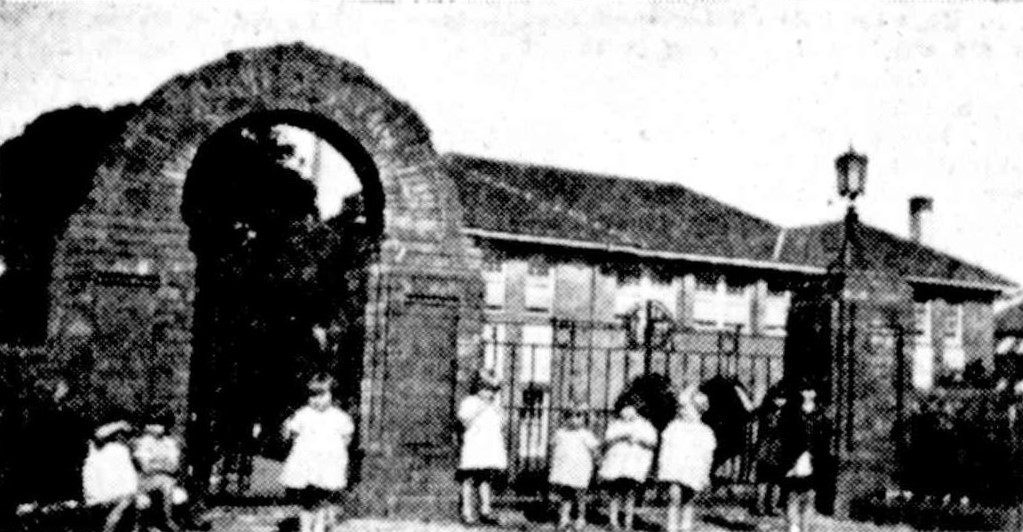
This is a photo showing young girls standing in front of the gates of the Church of England Girls’ Home at Carlingford, with the Mary McGarvey Home visible behind them. It shows 9 girls in white dresses standing in front of brick and iron gates in front of a large two-storey brick building. This image…
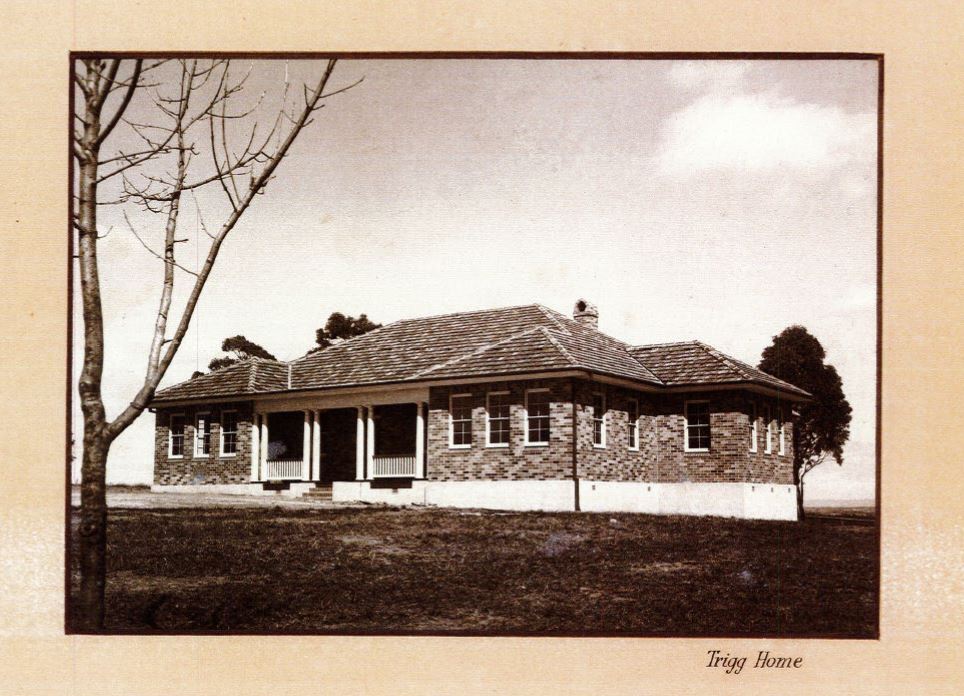
This is an image of the Trigg Home at the Church of England Boys’ Home, Carlingford. It shows a large single-storey brick cottage with a small central front verandah framed with white columns. The cottage is surrounded by lawn, with a few trees in the background and foreground. This photo is undated, the date included…
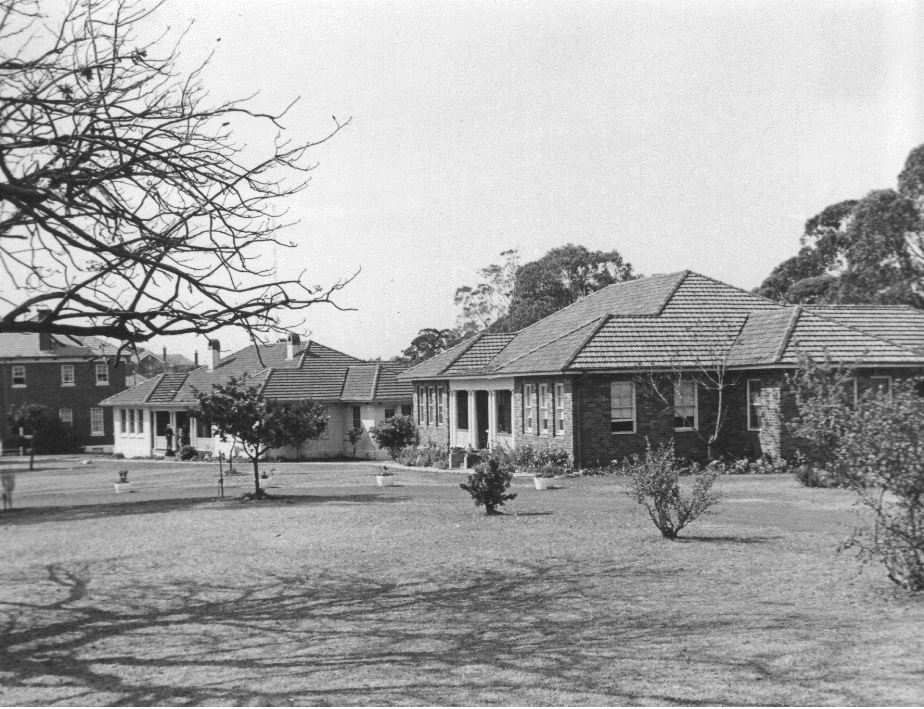
This is an image of three of the buildings at the Church of England Boys’ Home, Carlingford. It shows the Spurway Cottage (right hand side), Broad Cottage (centre), and part of the Buckland Memorial Home (left hand side). The two cottages are similar in shape and style – both are large single-storey cottages with a…
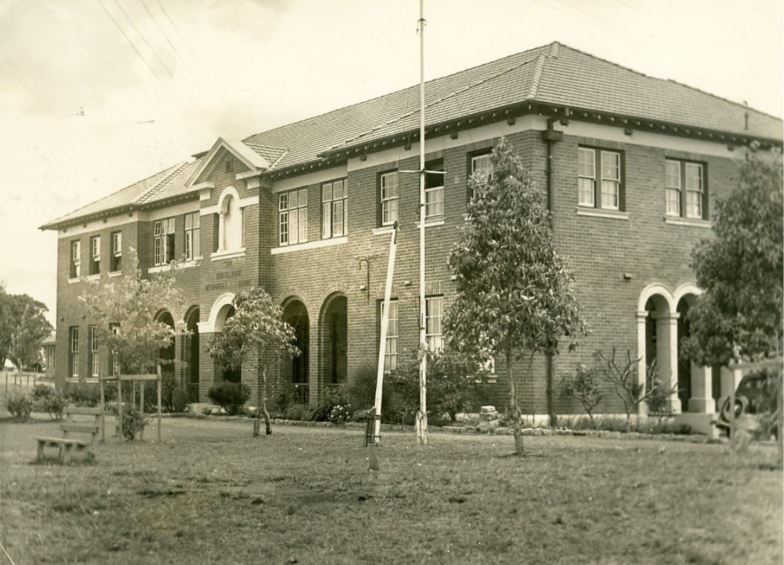
This is a photo of the Buckland Memorial Home at the Carlingford Church of England Boys’ Home. It shows a large two-storey brick building with lots of windows and decorative archways running along a covered walkway along the ground floor, some of which have white rendered highlights. Above the central front entrance is lettering that…
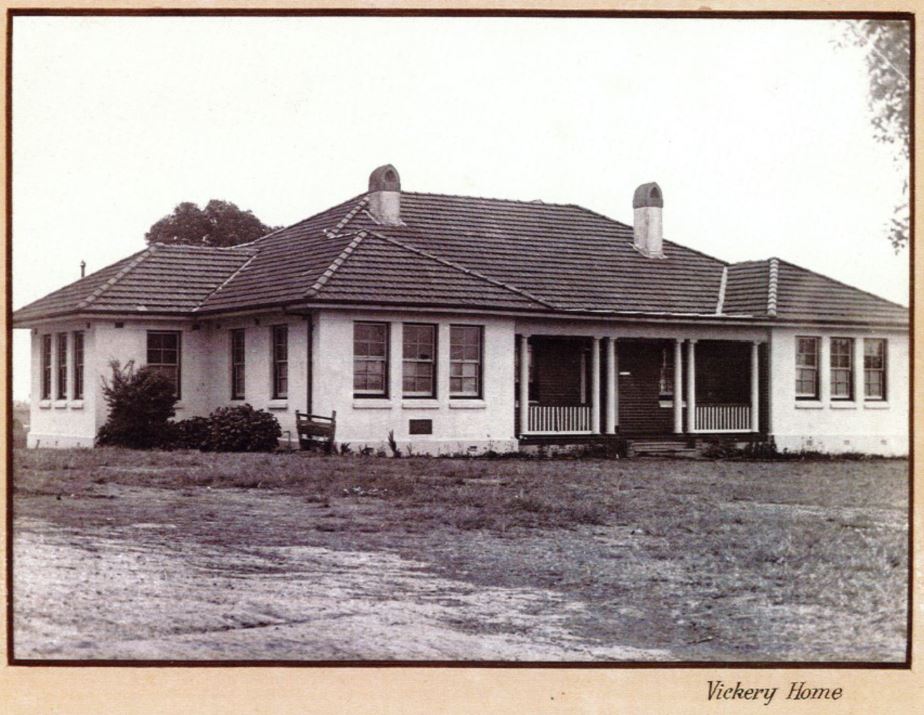
This is an image of the Vickery Home, or Vickery Cottage, at the Church of England Boys’ Home, Carlingford. It shows a white rendered single-storey cottage with a tile roof and two chimneys surrounded by lawn and a few small shrubs. The cottage has a small central front verandah which is framed by thin white…
The Register of Admissions and Discharges for Grosvenor Hospital contains information about patients at the Hospital, most of whom were under 10 years old when they were at the Hospital. The register contains the following information: date of admission and of previous admission (if any); patient number; name; sex; age; marital status; occupation; place of…
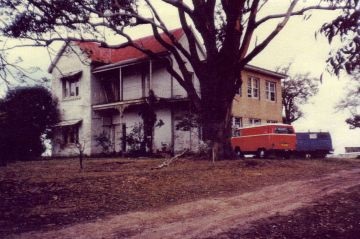
This is an image of the Boys’ Hostel at the Church of England Boys’ Home, Carlingford. The Hostel was previously the rectory connected with St Paul’s Church, and was also known as the James Stuart Memorial Hostel. The image shows a large two-storey white weatherboard house with a red roof, with a large eucalyptus tree…
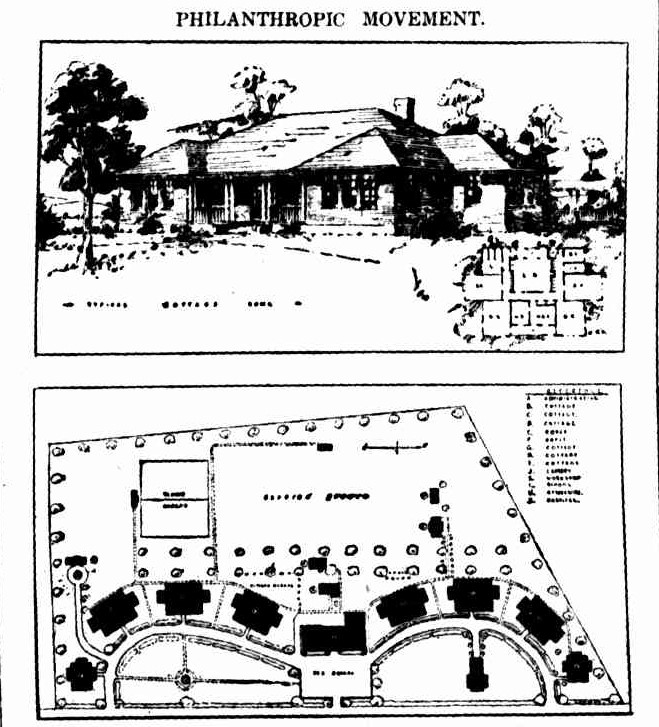
These two images are building plans for the Church of England Boys’ Home site at 756 Pennant Hills Road. The top image shows a sketch of the front of a single-storey cottage accompanied by an inset floor-plan of the building. The lower image is a plan of the whole site. It shows a curved line…
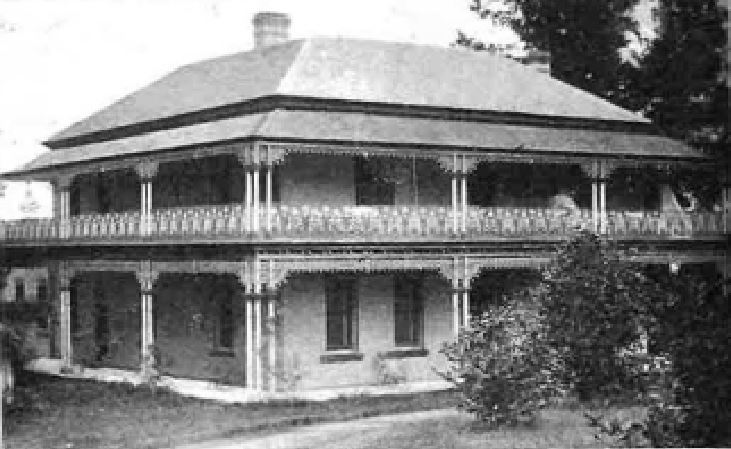
This is a photo of the building known as ‘Minden’, or sometimes ‘Strathmore’, at Carlingford. It shows a large two-storey building with ornate wrought-iron verandahs circling the top floor. The building was initially used by the Church of England as a home for ‘delicate’ children, then from 1918 it became the Boys’ Home, and from…
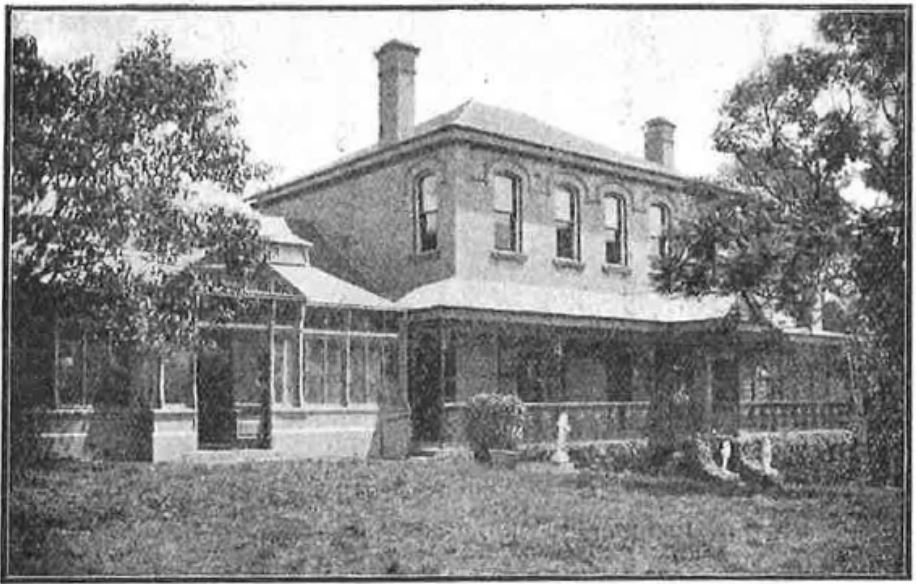
Arden Girls’ Home was opened by the Church of England Homes on 5th August 1919 at Forsyth Street, Glebe. It was both a girls home, as well as administrative headquarters for the Church of England’s management of its other Homes on the opposite side of Forsyth Street (Avona Girls’ Home, Tress-Manning Girls’ Training Home, Strathmore…